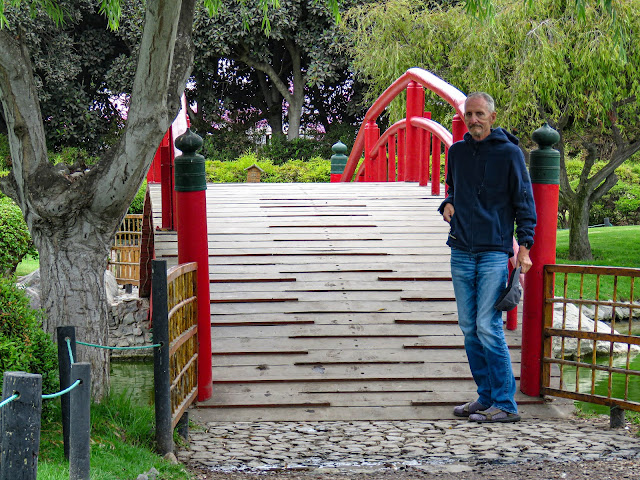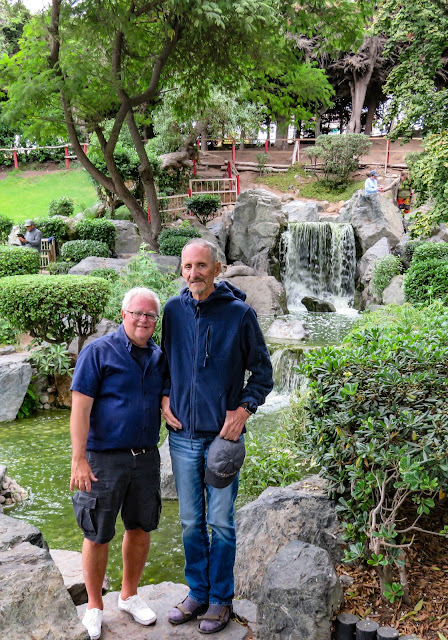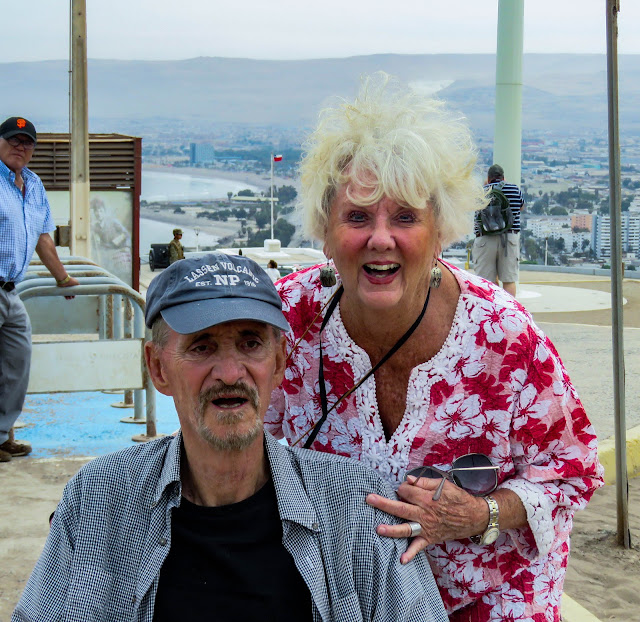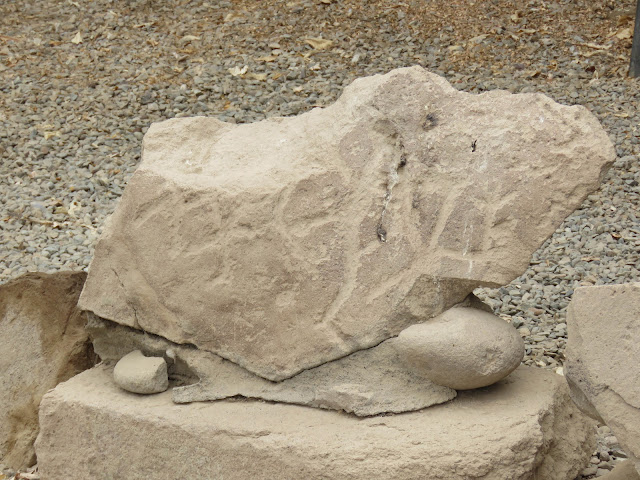This morning the ship pulled into Coquimbo. I have to admit that this is one of those towns that I have never heard of even though this is my third trip to Chile. Once again, it is extremely dry here and there are few trees in sight. Living in North America, particularly the Pacific Northwest, I always think of weather coming from west to east bringing lots of rain. But I now get the idea of the trade winds, the winds that blow weather from east to west in the latitudes north and south of the equator. Rain clouds come off the South Atlantic and the Caribbean and then slam into the Andes, one of the highest mountain ranges on earth. It is not surprising that the areas on the lee side of the mountains should be dry, even drier than those in the rain shadow of the Sierras and the Cascades. One of the values of traveling is that it makes dull facts that you once had to memorize become interesting, even compelling.
There are lots of concrete houses as there are in most poor dry places. At least some of these are colorful. Concrete looks better painted, I think, a lesson lost on a generation of modernist architects.
I had once again booked a tour online, and at least that happened today. John was pretty sure we were going to be stood up again, and wanted to wait to that last minute before getting out of the ship. But once we were outside the security perimeter of the port, we found our guide and the minivan. There were about a half-dozen of us plus the guide and the drive.
There are actually two towns here, I learned, though they have more or less merged into each other. La Serena is one of the oldest colonial settlements. Given the lack of resources in the area, I am not sure why the Spanish planted a town here. Today, it is flourishing as a beach resort. Most of the beaches on the Chilean coast are just rocks. This is one of the few places where there is sand, and Chileans who cannot get away to fancier places in other countries come here for summer holidays. Coquimbo, in contrast, is a mining town from the nineteenth century. Americans and Europeans wanted copper, and the Atacama desert is still a rich source of that metal.
The tour bus began by taking us to a fake lighthouse. This is actually the most famous sight here and “El Faro” is the symbol of La Serena. The Chilean navy built it a few decades ago to promote tourism.
Everything about this place is fake. The lighthouse has never had a light in it and is not located anywhere near maritime hazards. And all the turrets and battlements are as decorative as some Victorian castle in the highlands. This place even has a fake cannon. But tourists love it, and who can resist posing with a cannon?
After this we went to La Recova, a handicraft market. This place came highly recommended by my guidebooks, but I didn’t think much of it. There were only a few things there that I didn’t think had come over in a container from some factory in China.
Our next stop was supposed to be museum, but it was closed, probably because it was Sunday. This seemed to take our guide and driver by surprise, and I wondered how often they had actually done this trip or how much training that had. Not that they were not nice enough people. They just did not seem all that well-informed.
They took us next to the Japanese Garden. It seemed odd that there was a Japanese garden in this provincial city. But our guide explained that much of the mining in the Atacama done by Japanese firms, and they created garden as good-will gesture to the community. It is actually surprisingly nice. In places, it reminded me more of a Chinese garden with the red bridge and large reflecting ponds.
There was a small Zen Garden.
There were a surprising number of birds in the gardens. Apparently many of these were also a gift from Japanese.
Most of the birds were ducks, and while there were several species, all fairly attractive, they were among the most aggressive ducks I have ever seen. They attacked each other constantly, and tourists learned to get out of their way.
Like many Japanese gardens, there was a waterfall and stream. It was not nearly as impressive as one in Ashland. As we looked at it, our guide offered to take a picture of us.
After this, we piled into the van and went off to a restaurant on the beach for lunch. This was part of the package: I think the operators know that tourists seldom like to miss a meal. The restaurant was not ready for us, however, as we had come early. So, we had to wait. Some people walked up and down the sidewalk by the beach. John and I just went to the beach and sat on the sand. It is not a great beach. I suppose it might be one of the best in Chile, but the sand is rather coarse and not particularly golden. Nor was the restaurant any better. The meal was barely even mediocre. I had the fried fish, which was okay. John had the chicken breast, which was inedible.
We went on to Plaza de Armas. The square was lined with stalls selling all kinds of stuff. It was mostly junk, but better junk than we had seen in La Recova. Our guide then took to Cathedral. She assured us it was colonial. But you did not need a degree in architectural history to know that it was obviously mid-nineteenth century and that the design influences were French, not Spanish.
The cathedral had obviously been renovated sometime in the 1970’s, but whole place looked like a construction zone. Apparently they are renovating the organ.
After this, our guide was ready to take us back to the ship a couple hours early. But one of the tour members, probably irritated by the minimal value of this tour, insisted we go to "the cross" as we had missed the museum. The cross was obviously what we had seen earlier in the day from the ship. Somewhat reluctantly, the guide agreed.
As we drove there, the guide filled us in with a little background on the cross. It is called "El Cruz del Tercer Milenio," the Cross of the Third Millennium. It was begun in 1999 and finished in 2001, It includes a chapel and a museum. But the real reason people like to visit is that the horizontal part of the cross is an observation platform.
The van drove through the straight streets of La Senena and then up and down the hills of Coquimbo. We saw ship along the way.
But after about thirty minutes we finally found our way up to the top of the hill.
The monument ended up having better handicapped access than I thought it would, and I managed to get John in without him having to go up several punishing flights of stairs. We had to take up a couple elevators to make our way to the viewing platform. There were nice vistas of the area, though none of the windows opened. I guess there is an obvious reason for that.
We spent about ninety minutes of travel for about five minutes on the observation platform, but in the end it was my favorite thing about this stop on the coast.
La Serena is obviously for domestic tourism. Not much here for foreigner visitor. But in the end, places like that can provide a deeper insight into a country than famous tourist sights. Chile is a country that is conflictedly Catholic, more middle-class than any other in South America, haunted by the past as it pushes forward economically and politically. And if you look hard enough from that observation deck, you can, I think, see all of that.



























































